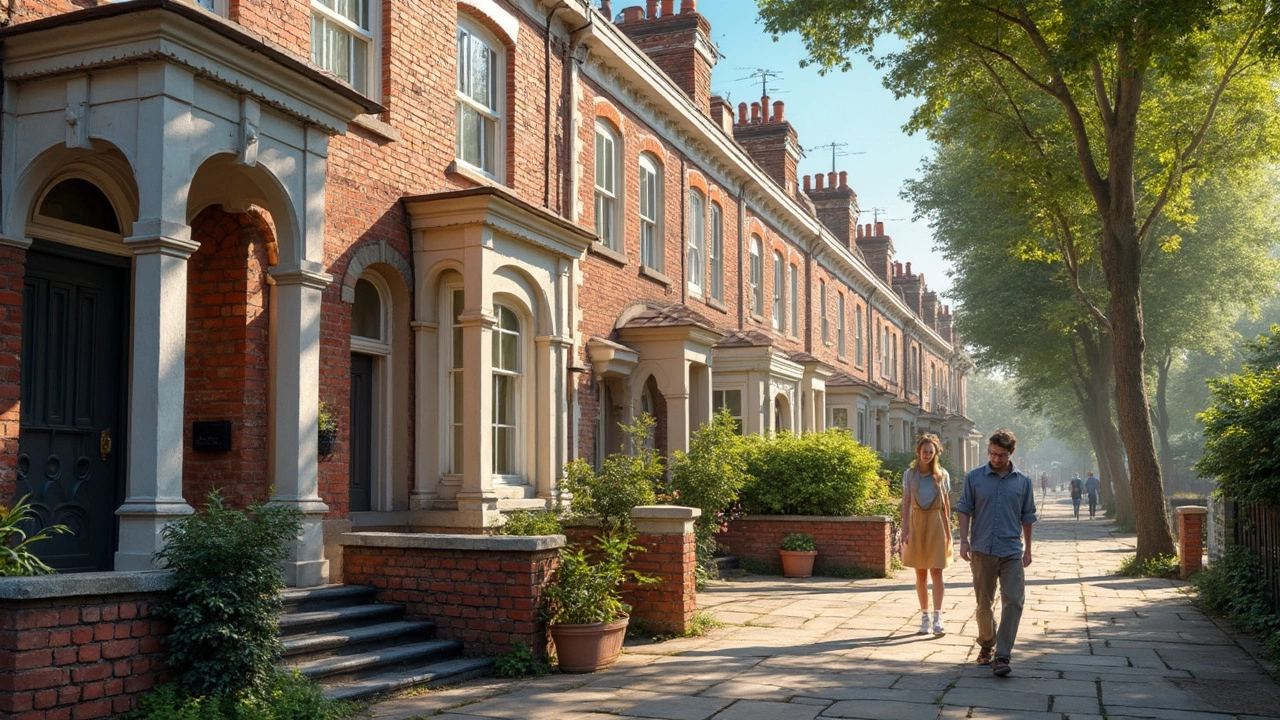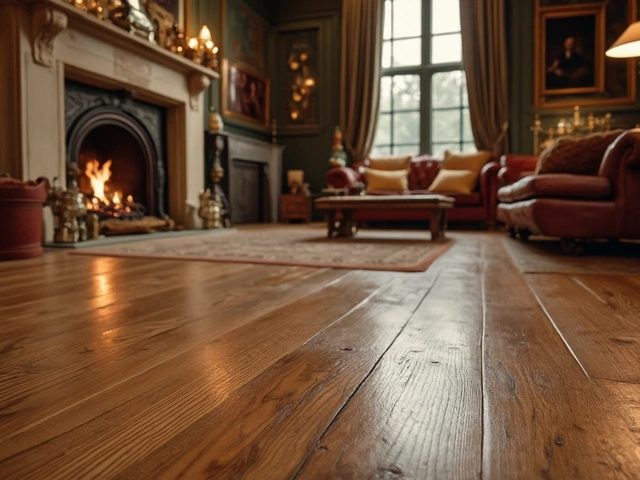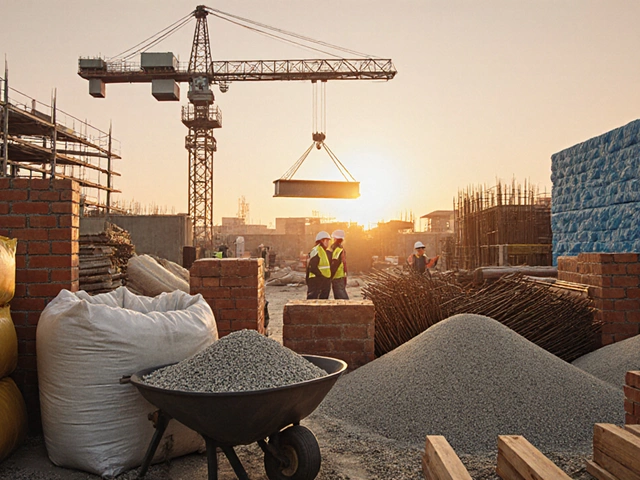
Picture yourself walking into a beautiful old house, maybe one that's a century old. The wood floors creak with each step, the doors are heavy, and the windows show that charming distortion only time can create. But in the back of your mind, there’s that nagging question—what’s going on beneath your feet? Are all older homes secretly hiding foundation problems, just waiting to wreck your peace (and your wallet)?
How Age and Construction Methods Affect Foundation Health
Old houses are survivors—they’ve made it through decades, sometimes more than a century, of wild weather swings, shifting ground, and the occasional nearby construction blast. But the way homes were built decades ago was pretty different from today. Early builders didn’t always have access to concrete that matched today’s quality standards. Reinforcement methods were less sophisticated. Plus, building codes? Not always around, or at least not very strict. So, a house built in 1920 or even 1950 is likely set on materials that aren't as robust as what you'd see poured in a new subdivision today.
Many homes built before the 1950s rely on stone, brick, or shallow concrete footings. These materials can be tough, but moisture, freeze-thaw cycles, and shifting soil put them to the test year after year. Soil plays a villainous role: expansive clay soils, common in places like Texas and the Midwest, love to swell up when it rains and shrink in drought. Over decades, this see-saw can tilt, crack, or even buckle a foundation. If the lot wasn’t properly graded, water might pool near the house instead of draining away. That's trouble just waiting to happen.
It’s not all doom, though. Some old homes were built on incredibly solid ground or were simply "overbuilt"—maybe out of pride, maybe because materials were cheap back then. These houses might go a hundred years without serious movement. Yet, the odds do lean toward some settling and shifting. According to the American Society of Civil Engineers, roughly 25% of U.S. homes experience some kind of foundation distress at some point, with older homes at higher risk. That doesn't mean they’re all doomed, but it's certainly something to keep an eye out for.
Typical Signs of Foundation Problems in Older Homes
So, what does a foundation issue actually look like? Spoiler: it’s not always a gaping crack in your basement floor. Older homes can be sneaky—their quirks might mask far bigger problems. Watch for doors and windows that stick for no obvious reason. If you notice gaps around frames or wavy floors that seem to roll beneath your footsteps, that could be a red flag. Cracks are another story—they’re not all equal. Fine, straight cracks in plaster or drywall? Maybe just settling. Wide, jagged, or stair-step cracks in masonry? That’s a whole different ballgame.
Don’t forget the basement or crawl space. Musty smells, damp patches, or visible moisture on the foundation wall might point to poor drainage or even active leaks. A white powdery residue on the walls—that’s called efflorescence—means water is wicking through the concrete, bringing minerals with it. Older homes are more likely to have this simply because they've had more time to soak up water. According to a 2023 survey from Home Inspection Insider, about 43% of foundation issues in inspected older homes involved some form of water intrusion.
You might also see floors sagging or feeling "bouncy" in certain areas. While some bounce is normal in older wood-framed homes, excessive movement warrants a check. Exposed beams or joists should be straight, not bowed or cracked. In homes with basements, look for columns or posts leaning or rusting—these can signal shifting or settling below. Don’t let the paint fool you. Cosmetic cover-ups sometimes hide big issues, so a fresh patch of concrete or a bit of creative molding could be someone's way of hiding a crack or gap. Trust your instincts—if something looks off, there’s probably a reason.

Knowing When "Settling" Means Trouble
Every house settles a bit, especially a vintage one. But what’s the line between character and catastrophe? If you’re seeing cracks wider than a quarter inch, doors that suddenly refuse to close, or floors dropping more than an inch over a six-foot span, that goes beyond harmless settling. Foundation movement can be gradual, but sometimes it's fast—especially after a big storm or an extreme drought. That's when tiny problems turn on a dime into wallet-busting crises.
One common myth is that foundation repair automatically costs a fortune. Sometimes, simple fixes like improving drainage or adding gutters solve moisture issues that push foundations around. But if there’s major movement, things can escalate fast. According to HomeAdvisor, the average cost for foundation repair in 2024 hovered between $4,000 and $12,000, but severe cases can hit $30,000 or more, especially if piers or underpinning are needed. Older houses might also need special work to preserve their look or meet historic district rules.
Talk to inspectors and foundation experts before making a move. Ask for specifics. Serious pros use tools like laser levels, foundation elevation surveys, and thermal cameras to get a clear picture. Get second opinions—some companies push big repairs that aren’t really necessary—but trust the science. If there’s real movement, ignoring it rarely pays off. The house might become harder to sell later or could end up costing far more after years of delay. If you spot early warning signs, jump on them fast. Small, early repairs are cheaper than waiting for big problems to grow.
Prevention and Long-Term Care for Older Home Foundations
Now for the good news—staying ahead of foundation trouble isn’t rocket science. Most issues come down to water. If it gets near the foundation and can’t escape, expect headaches. So, keep gutters clean, extend downspouts away from the house (ten feet is smart!), and make sure the ground slopes away from the foundation by at least 6 inches over 10 feet. Don’t let beds of mulch, dense shrubs, or flower boxes trap moisture against the walls. The house needs to breathe, especially at the base.
If you live in a place with big swings between wet and dry, watering the ground near your foundation during droughts can help prevent soil shrinkage. But don’t overdo it—you’re aiming for “slightly damp,” not a backyard bog. If you’re considering landscaping, choose plants whose roots don’t go deep or suck up all the moisture, causing the ground to shrink or swell unevenly. In snowy climates, shovel away snowdrifts in spring before they melt against the house. For brick or stone foundations, check the mortar every few years. Repointing (restoring the joints) keeps water out. Crumbled mortar lets in moisture and pests, so don’t skip maintenance.
Regular home inspections pay for themselves over time. Every few years—especially if your home is over 50 years old—get a pro to check the foundation, crawl space, and structural supports. They’ll catch little issues before they grow horns and start running wild. And if you’re buying an old house, insist on a thorough inspection by someone who knows historic homes. Some states (like California) require earthquake retrofitting for safety—ask about local rules. Here’s an at-a-glance summary of things to check and what they might mean:
| Symptom | Possible Cause | Urgency |
|---|---|---|
| Sticking doors/windows | Foundation shift or humidity swelling wood | Moderate—monitor closely |
| Wide cracks in foundation | Settlement, soil movement | High—get inspected soon |
| Sagging floors | Joist/beam settling, rot, poor support | High—structural inspection |
| Musty, damp basement | Poor grading, gutter issues, leaking foundation | Moderate to High—fix drainage |
| White residue (efflorescence) | Water wicking through walls | Moderate—improve drainage, seal walls |
Foundation problems aren’t guaranteed just because your house has some history, but the odds do go up. With regular maintenance, fast action on red flags, and a little old-fashioned common sense, most older homes can keep standing straight for generations. The secret is vigilance. And when you spot trouble? Handle it early. Your home (and your bank account) will be grateful.




